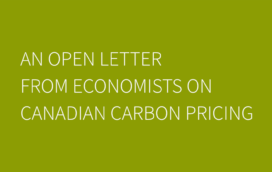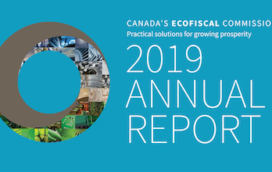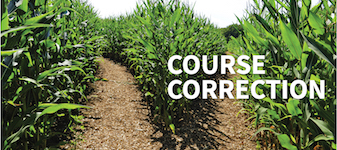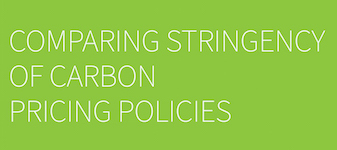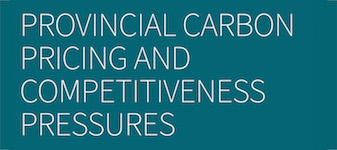What is Carbon Pricing?
Carbon pricing policy attaches a cost to emitting greenhouse gas emissions. It creates incentives for reducing emissions. Carbon policies include carbon taxes, cap-and-trade systems, and hybrids of the two. Pricing carbon emissions can help to achieve reductions at lowest cost, can contribute to global emissions reductions, and can help position Canadian firms to compete in a cleaner global economy.
Our research shows that carbon pricing is the most practical and cost-effective way to lower greenhouse gas emissions while encouraging low-carbon innovation. Moving forward, we will continue to study the evolving carbon-pricing landscape in Canada and beyond, while examining key policy issues such as the challenge of business competitiveness, options for revenue recycling, and how to link different provincial policies.
Carbon Pricing Q&As Carbon Pricing Fast Facts Our Research
Recent Blog Posts
Read all our blogsLatest Videos
Carbon tax vs. cap-and-trade: more similar than different
The two main ways of putting a price on carbon currently used in Canada are a carbon tax, like they have in British Columbia, and a cap-and-trade system, like they have in Quebec. Both systems are more similar then they are different:
- both put a price on carbon
- both create market-based incentives for emissions reductions and innovation
- both can generate revenue that can be recycled back to the economy
- both are more cost-effective than inflexible regulations
Where they differ is that a carbon tax guarantees a certain carbon price, whereas a cap-and-trade system guarantees a certain amount of emissions reduction. The core advantage of a carbon tax is its simplicity. The core advantage of a cap-and-trade system is that it is easier to harmonize with other cap-and-trade systems.
Learn more about the differences between carbon tax and cap-and-trade systemsWhy Do We Need Policies that Put a Price on Carbon?
Global climate change is already taking a toll on Canada’s economy. Furthermore, the economic costs of not reducing GHG emissions are potentially very large. Though notoriously difficult to estimate with precision, one study estimates annual global damages by 2095 at $12 trillion. Almost all regions and economic sectors of Canada are vulnerable:
- Extreme Weather. The increasing intensity and frequency of extreme weather events, such as wildfires and storms, are leading to large financial losses for Canadian insurers.
- Forestry Products. Climate change has already had major impacts on Canada’s forest-products sector, including the outbreak of the mountain pine beetle in Western Canada.
- Freshwater Levels. A warmer climate brings with it the risk of reduced water levels in Canada’s lakes and rivers, which could have major implications for a range of sectors, including shipping.
- Sea Level. The melting of glaciers and ice sheets from warming, along with thermal expansion from warming ocean water, contributes to global sea-level rise and poses huge threats to urban residents and infrastructure on both the Pacific and Atlantic coasts of Canada.
- The North. The Canadian Arctic faces both more severe threats and greater likelihood of further impacts, including major disruptions to the way of life of First Nations and Inuit with loss of ice cover.
- Agriculture. A warming climate can have both positive and negative economic effects. On the positive side, for example, production of winter wheat could increase. On the down side, droughts and pests can create financial losses.
- Fisheries. The rising atmospheric concentration of GHGs is leading to rising ocean acidification, which is expected to have far reaching effects on marine ecosystems along all three of Canada’s coastlines.
- Mining and Exploration. Operations bear economic costs—especially in the North, where operations often rely on ice roads for the transportation of both inputs and outputs.

